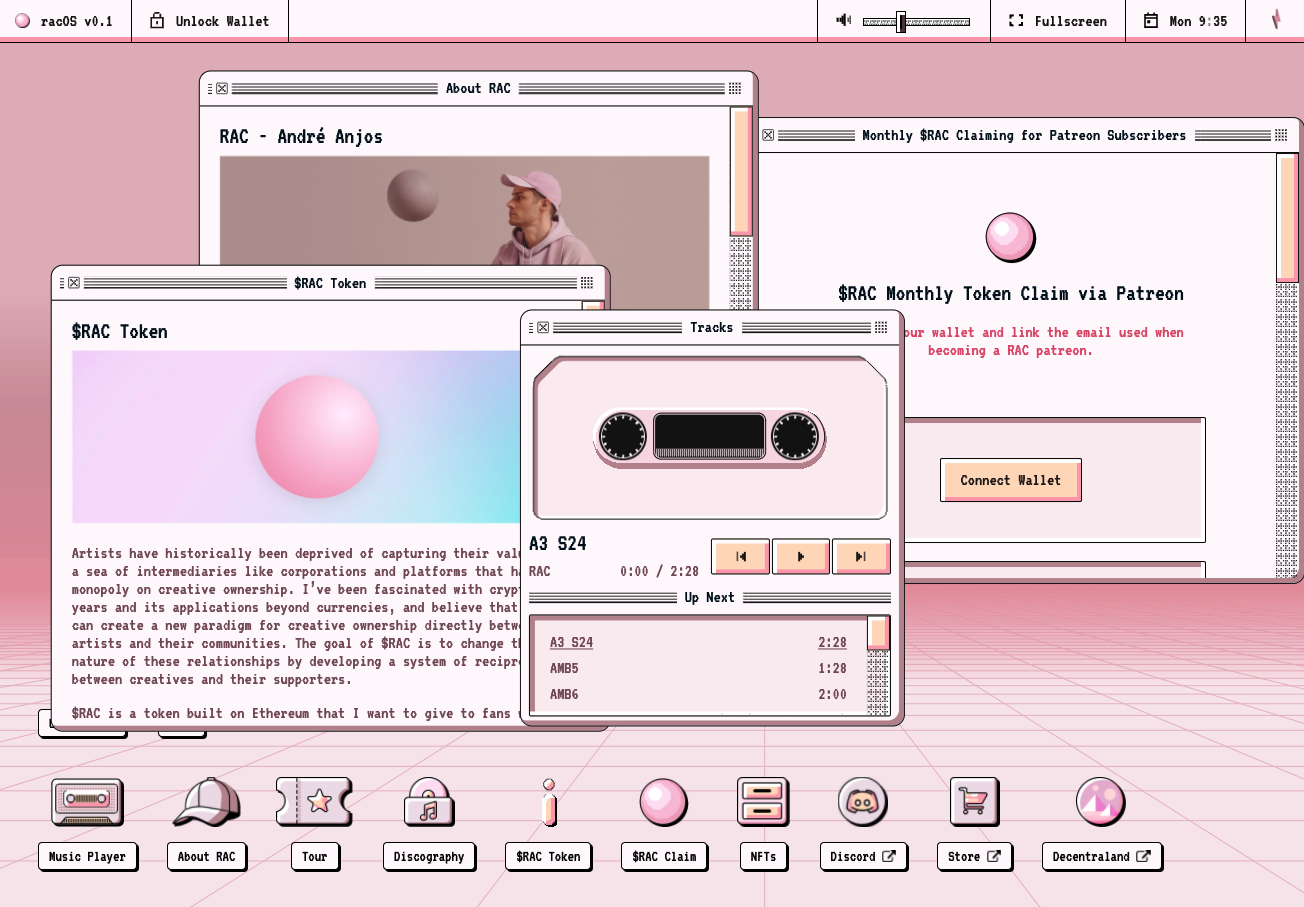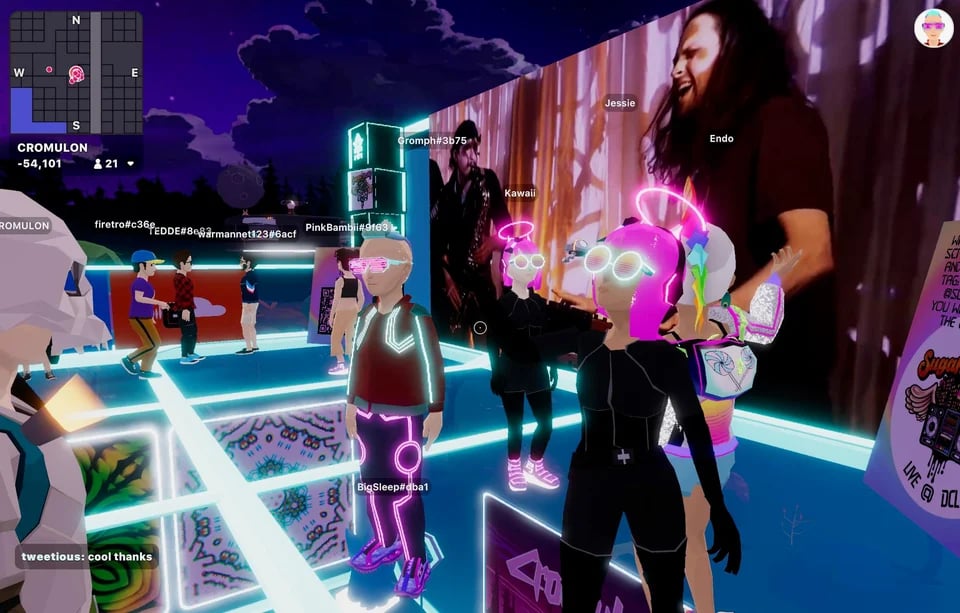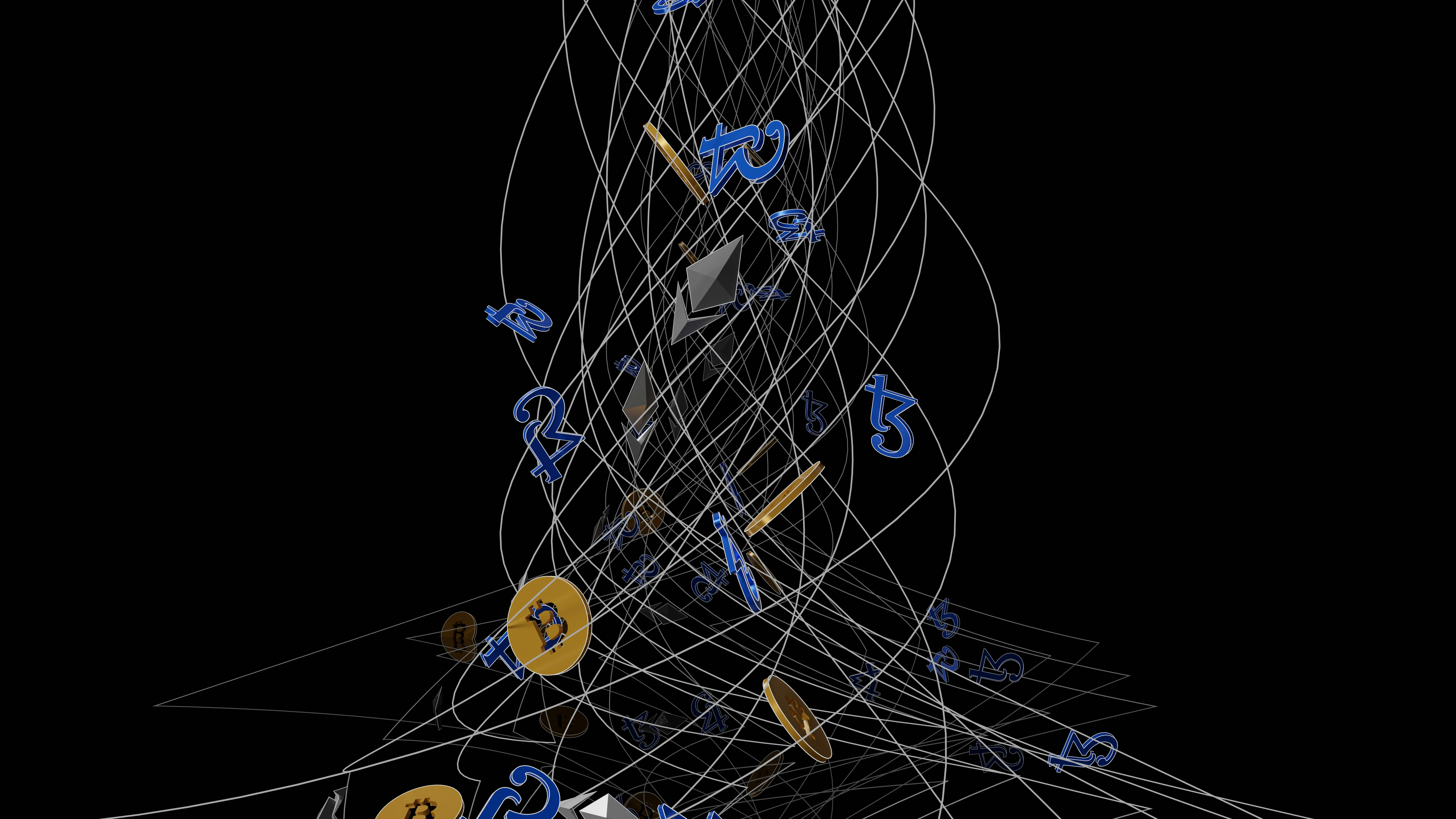Web3 & The New Creator Economy
We dive into the past, current, and future of the web to understand how decentralized technologies are shaping the internet & the new creator economy.
From the advent of e-commerce to social media and web apps - the internet has come a long way since the days of static web pages and connective hyperlinks.
We’re now reaching the cusp of the third iteration of the internet, enabled by a distributed network of peer-to-peer value exchange. At the heart of the web3 ethos is the creation of value for users, not platforms, following what’s been a decade’s worth of value-extraction by tech companies who haven’t been the most transparent with consumers about how their data is being tracked, managed, and sold.
In the same way that the genesis of cryptocurrency was intended to dismantle the centralized structures of finance and currency, web3 intends to deconstruct the vertical structures that constitute the modern internet, with the potential to radically transform the way we think about ownership, value creation, and how communities are built. Read on to learn more about how web3 is shaping the future of the internet and the new creator economy.
What exactly is web3 & how do blockchain & NFTs fit into it all?
While web3 in itself is a relatively new term, its underlying infrastructure has been around for a while. Since 2018, NFTs have been thrust into the mainstream, and ideas surrounding cryptocurrencies as a purely financial construct have shifted considerably in a short space of time.
.png?width=600&name=Today%2c%20the%20word%20%E2%80%9Ccrypto%E2%80%9D%20no%20longer%20feels%20suitable%20when%20referring%20to%20what%20is%20considered%20to%20be%20a%20full%20redesign%20of%20the%20internet%2c%20its%20structures%2c%20and%20economies.%20Web3%20emerged%20in%20its%20place.%C2%A0%20(4).png)
Web3 is an amorphous term that’s evolving rapidly depending on who’s talking about it. On a high level, it refers to the next stage of the internet whereby services and mobile apps are rebuilt upon a broad spectrum of emerging decentralized technologies, like cryptocurrencies, DAOs, and NFTs. This also extends to metaverse-based gaming applications, augmented and virtual reality worlds that make use of blockchain-enabled digital ownership.
In order to fully comprehend the magnitude of this shift and what web3 is all about, it’s important to first understand what came before...
Web1: The Read-Only Web
In early forms of the Internet, 'cyberspaces' comprised of open-platforms that were community-governed and decentralized. Tim Berners-Lee's World Wide Web was emblematic of this vision. Developed around egalitarian principles of trust, openness and democratization, he imagined a new public space that would enable instant access to information and fluid collaboration between researchers, techies and individuals.
Web1 lived up to this vision. It was the wild west of personal sites, information repositories, file sharing servers and bulletin boards, designed to be uncensorable and with no central point of failure. It was built upon open-source software protocols like HTTP. Source code was freely available to all and anyone could freely build upon it, so much of the value was created by the networks' early users and developers.
Web1 consisted of sites serving static content instead of dynamic HTML. These were the good old days when users would surf the web, meaning that users primarily took in information by a few content producers instead of creating content themselves. Although some digitally-native creative projects emerged in web1, it wasn't until the advent of web2 that the creator economy really took hold.

Web2: The Social Web
Web2 brought us a new era of social services and e-commerce platforms. This revolutionized social interactions, making it easy for users to create, and even profit, from content published online. Users could now enjoy p2p interactions on a global scale and both creators and consumers alike could communicate and engage in ways that were not possible before. But this was always mediated by platforms that acted as the middlemen.
By 2004, the notion that the internet could be an open and democratic medium had been superseded by the rapid centralization of the internet by corporate tech giants. Although these platforms have done a great job at creating a new p2p economy, with advanced content discovery and a value settlement layer, they also dictate the rules and have control over our data. In short, web2 had drifted away from the original vision of the internet.
The Creator Economy is Broken
The creator economy refers to content creators of all kinds: artists, musicians, influencers, podcasters, gamers, and anyone else creating content and connecting with fans.
Creators face significant challenges in today’s digital economy. Although social media has been a great distribution method for creators when it comes to connecting directly with fans and communities, most creators rely heavily on web2 platforms to build audiences, creating a platform dependency for creators.
Web2 business models are opaque, advertising-based, and dependent on closed garden networks. Platforms generate engagement, driven entirely by creators. Youtube makes over $30 B in profit a year in ad revenue and yet only some of this goes to creators. Other platforms share nothing.
These platforms also have a centralized hold over the creator landscape by means of control over the production and distribution of content. Not only that, but users relinquish some control to the platforms that are licensed to use their content, and algorithms determine the context in which a creative work is seen by an audience.
This has enormous implications for content creators who are reliant upon a system that rewards viral, attention-grabbing content while disincentivizing more niche and thoughtful content. As a result, creators are compelled to seek the broadest possible audiences and to create content that attracts advertisers, limiting creativity.
In a landscape where attention is a scarce resource, it can also be difficult for creators to build authentic communities around them in web2. Tik Tok can turn almost anyone into an internet sensation overnight, but without a loyal community behind you, the hype train usually departs to the next one-clip-wonder just as quickly as it arrived.
The channels through which content creators can monetize from digital content are also limited in web2. With the value of a creative work tied to scarcity and social demand, the inherent reproducibility of digital files on the internet has meant that digitally-native creators have had little means to monetize their outputs beyond traditional advertising or subscription-based models. This can be restraining for creators who have to bend to the companies that fund them, meaning that they don’t always have full control over their image or brand identity.
From the Attention Economy to the Ownership Economy
Creators are beginning to interrogate the platform’s right to exercise control over their work, their relationships with fans, how they are incentivized and rewarded for the content they create. If web1 favored publishers and web2 favored platforms, the next iteration of the internet – also known as web3 or the decentralized web – is all about shifting the scales of power and ownership in favor of users and content creators.

The decentralized web seeks to break away from organizations monopolizing the flow of information on the internet. As a result, web3 projects will allow users and creators to gain more control over what data and information they will share.
In addition to data ownership, NFTs—which will form the backbone for web3—are also transforming notions of ownership in the new digital economy. Central to their value proposition is digital scarcity. This is because they can turn something infinitely replicable into a defined piece of property with verifiable authorship, ownership and traceability.
Blockchain-based digital ownership is perhaps the most enticing aspect of web3 for content creators as it makes it easier to monetize directly from digital goods. This provides a better model for creators to capture the value of their outputs whilst regaining more autonomy and control over their creations.
Fairer Secondary Markets
When Beeple's digital artwork 'Crossroads' was sold on the secondary NFT market for $6.6 million back in February of last year, at almost ten times the original sales price, Beeple automatically acquired 10% of the re-sale profits - that's $660,000!
A defining feature of the web3 ecosystem is the ability to track and pay artist royalties, permitting creators to continue to benefit from the long-term appreciation of their work. NFT royalties are issued using smart contracts, computer programs that can be permanently built into a blockchain to facilitate the automatic transfer of contractual agreements between parties.
In theory, because smart contracts are self-enforcing—they are automatically enacted if certain pre-programmed parameters are met—there is no need to rely upon third-party intermediaries or whoever is transacting the NFT to fulfill certain conditions on your behalf. In this regard, NFT royalties help to build trust while permitting creators to better capture the value of their secondary markets.
DAOs, Social Tokens & Fan Tokenomics
Emerging web3 technologies, tools and frameworks are also enabling new possibilities for decentralized collectives of people to coordinate and self-organize in their own interest. DAOs, for example, provide a unique structure for supporting the creator economy as they permit creators to have increased control of their relationship with their fans, encourage more direct engagement with artistic projects and enable communities better capture the value they create.
DAOs (an acronym for Decentralized Autonomous Organizations) are internet-native organizations that are collectively owned and governed by their community. As the name implies, DAOs are autonomous—they function independent of external and internal actors—and they are decentralized—decisions are made by the consensus of its members and without centralized leadership.
There are a number of ways to participate in a DAO, though usually, it is by the ownership of a token. These tokens represent membership, voting rights and ownership in the DAO. The community of stakeholders are able to contribute to decision-making within the DAO, such as how it will use funding and resources. All revenue across advertising, subscriptions, events and other means is then pooled into a treasury where all cash inflows and outflows are recorded publicly on the blockchain.
We are beginning to see more and more web3-native participatory fan cultures organizing themselves through social tokens and DAOs. For instance, creator-led DAOs are exclusive communities that bring together a creator's true fans. Last year, for example, the Portuguese musician and record producer RAC has begun designing a community around his $RAC tokens, which unlock access to various perks and exclusive content directly from the artist.

DAOs can also be used to crowdfund artistic projects. One such example is CabinDAO, an online and IRL community using blockchain technology to crowdfund 12-month residency programs for creators. The DAO is community-run, funded through cryptocurrency and governed entirely through votes and proposals.
What makes creator DAOs different from crowdfunding like Kickstarter or membership platforms like Patreon is that fans will no longer just support a project, they'll own a piece of it too. Contributors are then rewarded for helping the community grow as the value of their tokens correlates with a project's success. This gives fans an incentive to help advocate the value of a creator's work, creating whole new ecosystems whereby creators, fans, and communities can grow, earn, and share value together.
Enter the Metaverse...
The terms 'web3' and 'metaverse' are often used interchangeably. While both point to a future vision of the internet, it's important not to confuse the two concepts if we want to continue to build out a better internet.
While web3 alludes to a re-architecting of the internet using decentralized technologies, the metaverse is a vision of how this new iteration of the internet will seamlessly integrate into our daily lives.
The jury is still out on how exactly the metaverse will look and materialize, but it can be loosely understood as collection of virtual worlds where users can interact with each other, digital commodities and decentralized applications in an immersive way. It is a digitally-native space where we will spend the majority of our time to work, learn, play and entertain.
Web3 will provide the critical foundations of economic and monetary systems in the metaverse. We're already seeing this play out in immersive 3D worlds like Decentraland, where users can interact with other ‘players’ through online virtual avatars and use cryptocurrency to buy and sell virtual lands and estates.
The vast layer of the metaverse could replace social media as the optimal space for creators to reach and engage with their audiences. Musicians can host live metaverse performances to drive album sales while monetizing other types of digital fan memorabilia through NFTs. Imagine a concert T-shirt that can be worn by your avatar in a live 3D music experience.
The metaverse also offers a flexible and accessible arena for self-organized creative projects by independent artists and artist collectives, who can share ideas, build communities and showcase works in virtual exhibition spaces.

Placing Power Back Into the Hands of Creators
Technology has always been about democratization. In a world where recording studios and printing presses compete against software freely available to all, old gatekeepers are forced to go under or adapt their business models accordingly. Web3 is an evolution of this trend, bringing to the fore entirely new models, organizational structures, and community incentives that challenge the old way of doing things.
Creators will be able to drive revenue through new channels and more transparent business models while retaining more autonomy over their careers like never before. Arts-led experiments with DAOs can provide new organizational vehicles to remodel social relations within the creative economy. Fans will be able to form even deeper connections with creators in new community-owned ecosystems whereby value creation is fairly distributed and rewarded.
This is web3. The party is just gettin' started!


.jpg)
.png)